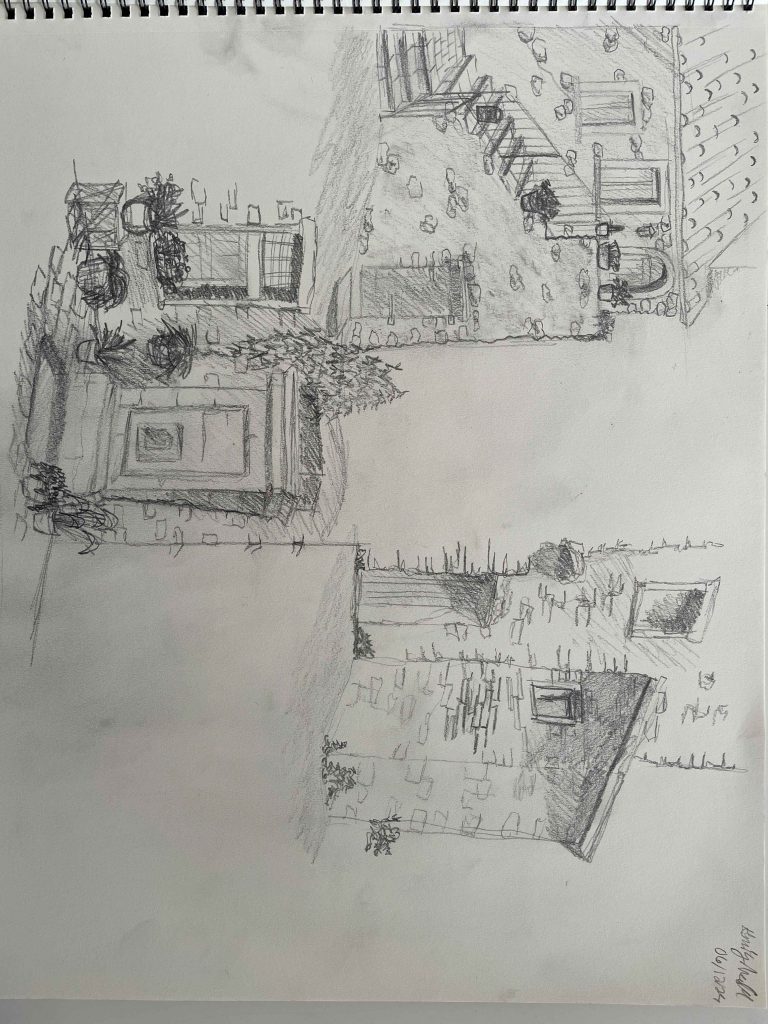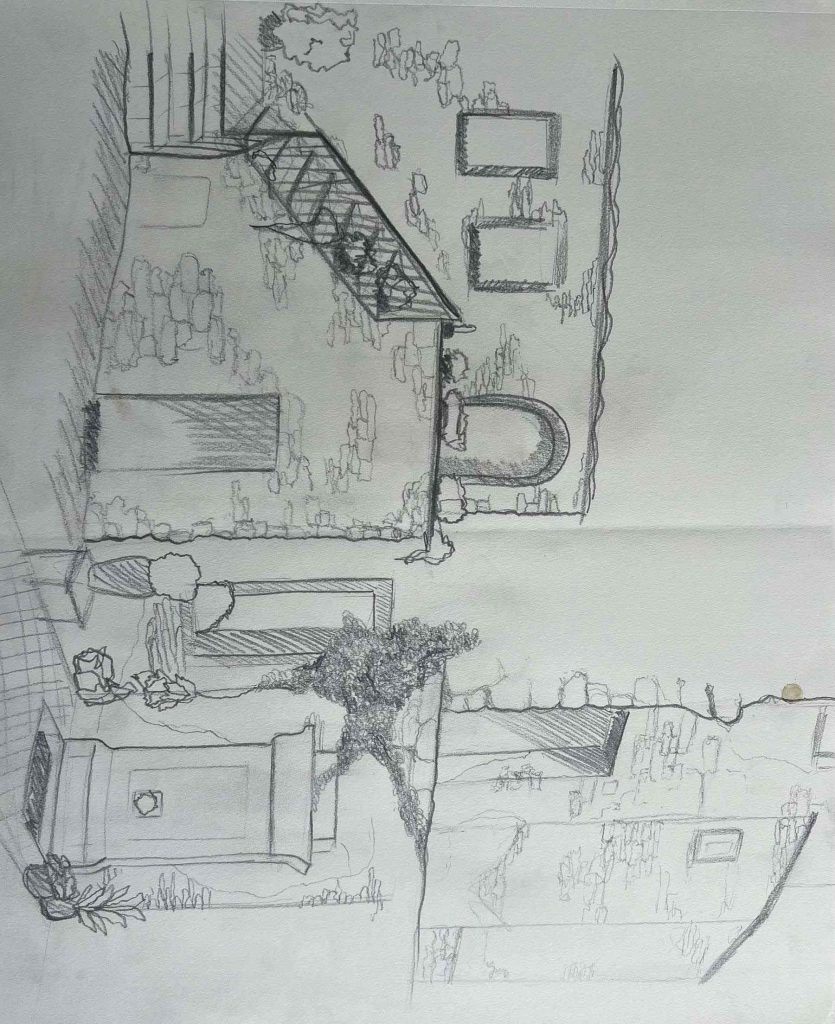Sketching in Volterra
As part of the curriculum of the Volterra-Detroit Study abroad program, students spent every Thursday sketching throughout the city. This class gave students the opportunity to explore the city and pay attention to the architectural details of Volterra. Each class focused on a different aspect of the city and a different detail in architecture. After each class, students were given a sketching assignment that they had to complete before the next week. Each assignment used the techniques that were focused on in the class, but added a level of complexity to further develop everyone’s skills.
The first class, each student had the choice to sketch a wall in the piazza outside of the school. The focus was on light and shadow of the materials that make up the wall. Since most walls in Volterra are made of local stone, the students spent the first class studying how the rough surface creates shadows on the face of the wall and how the light’s direction impacts the shadows created. The second part of the class was to focus on an object that was somehow attached to the wall. Objects such as mailboxes, lamps, signage, etc. This exercise made students focus on perspective while drawing as well as the lights and shadows created by the object. Perspective is an important aspect of sketching because it is how the world is seen through our eyes. Understanding vanishing points and how lines converge and diverge make or break a good sketch.
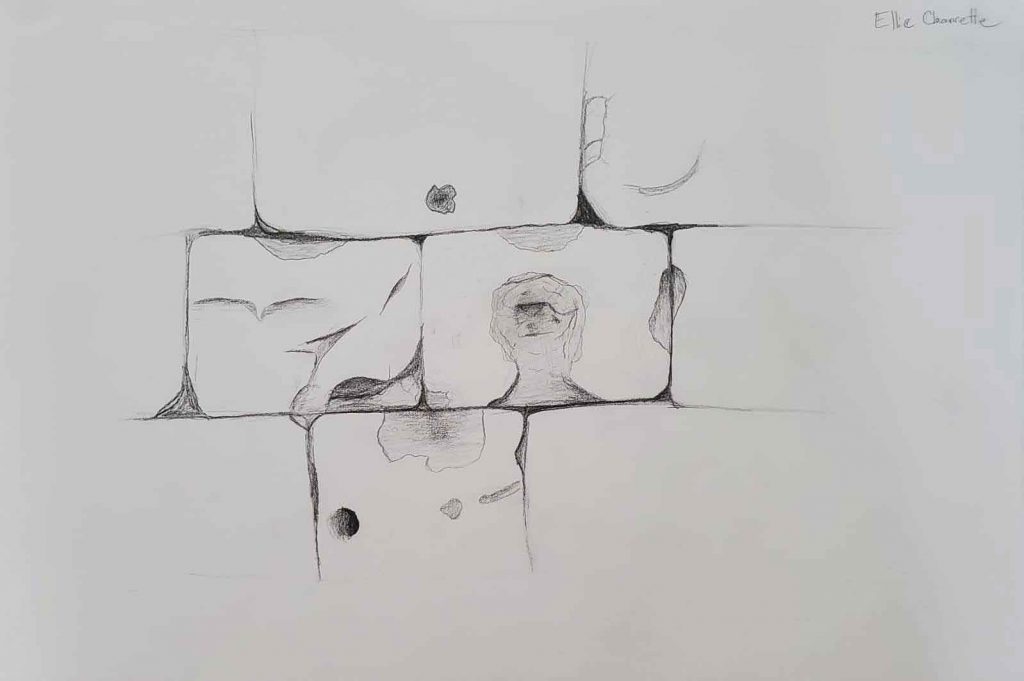
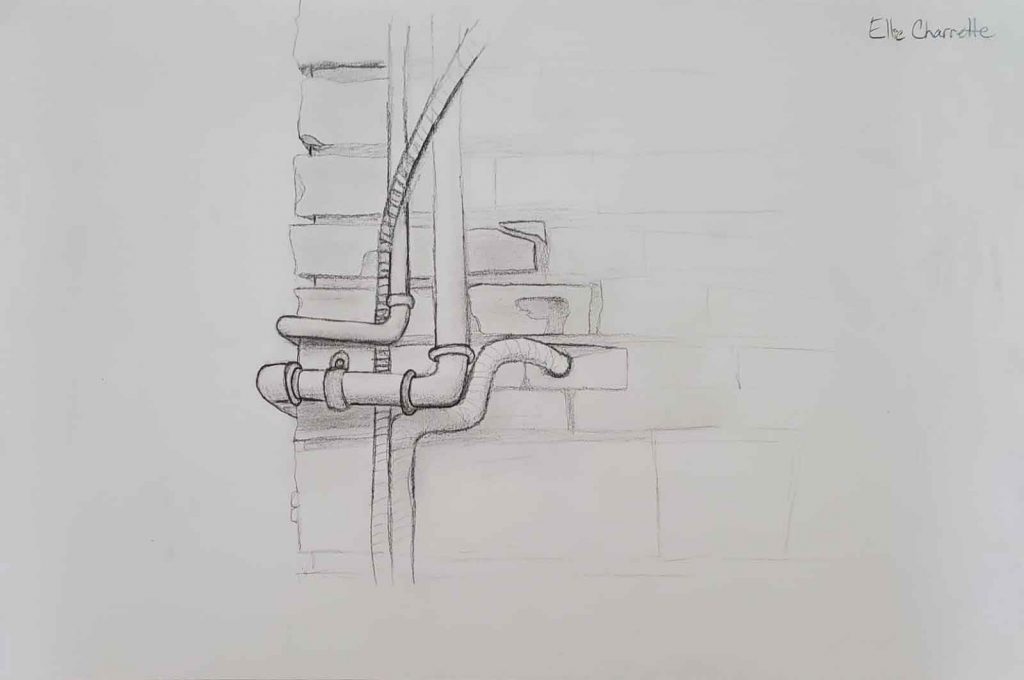
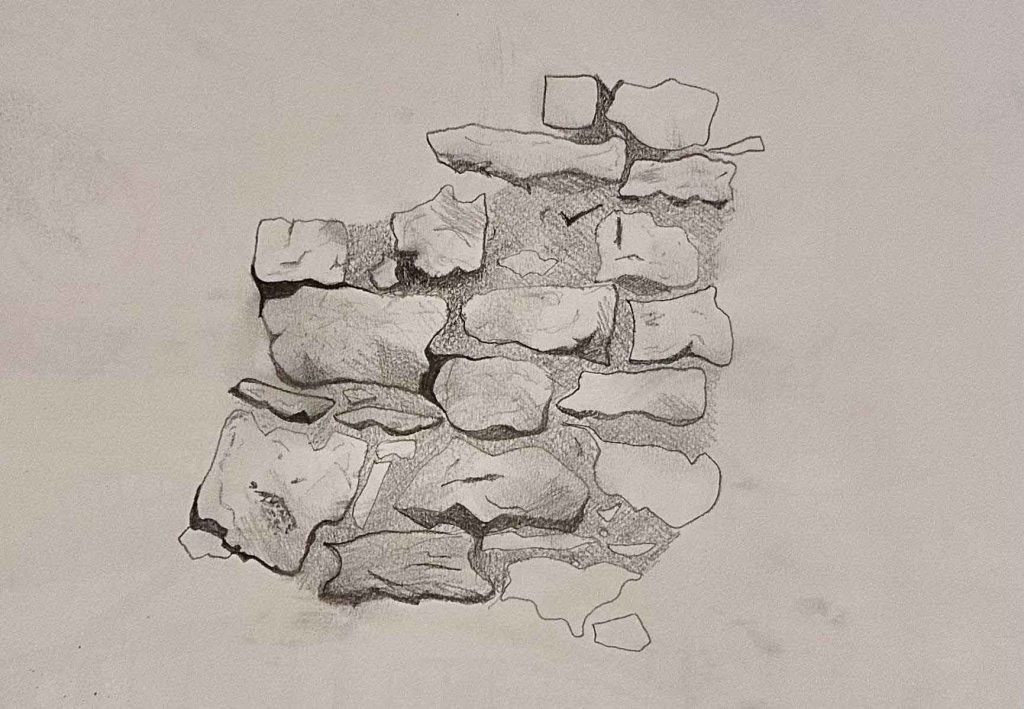
The assignment for the first class was to sketch an architectural element inside the church beside the school. This element had to be the base of the architecture, which could be the base of a column, a table, or any structural element. The purpose of this assignment was to again focus on the perspective as well as the light and shadows.
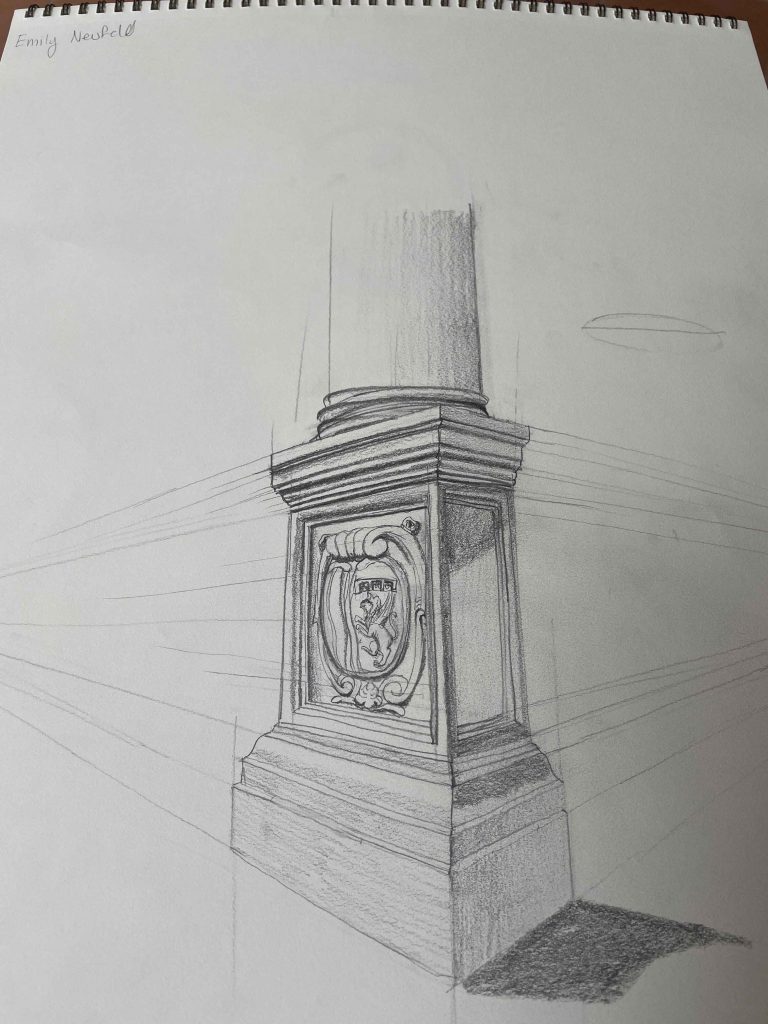
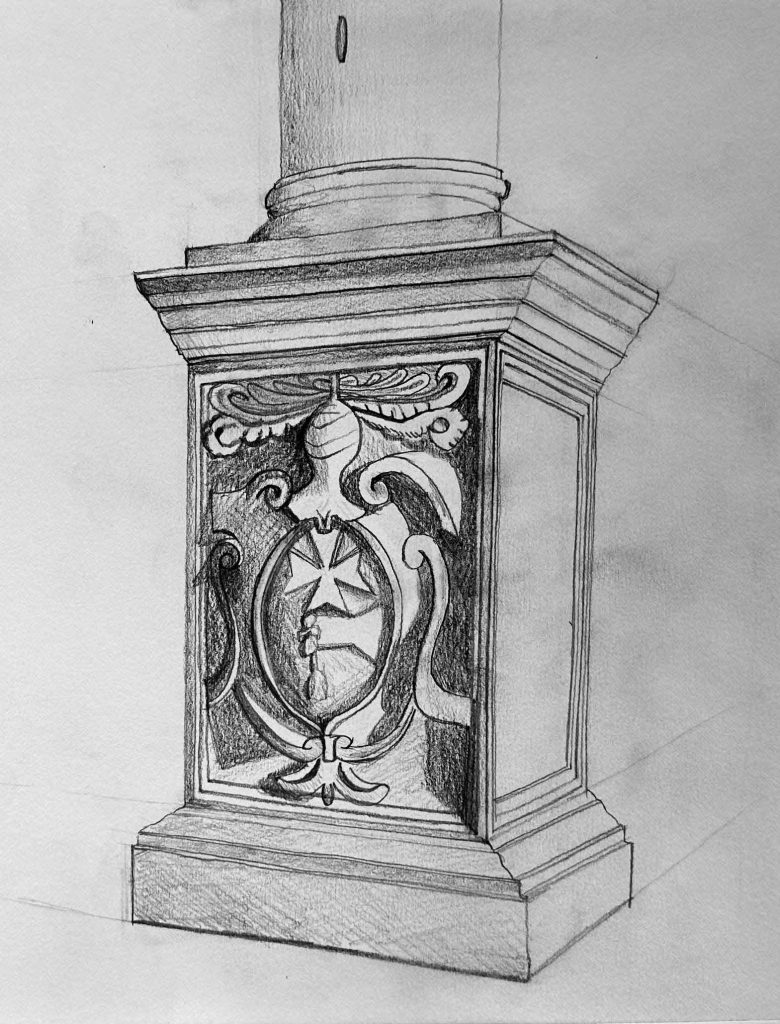
For the second class, the students walked to the main piazza in Volterra where they were given instructions to draw two doors around the city. The first door was selected by Johanna their professor, which was a smaller door that entered into an apartment complex and the second door was up to the students to choose. This assignment took the skills from the previous week and added on to them. Each student had to make sure the angle at which they were sketching from included a semi-difficult perspective and had contrast between the lights and shadows. Added on the this sketch was the surrounding context. The door may have been the main subject but students were also required to sketch the steps leading to the door as well as any framing around it.
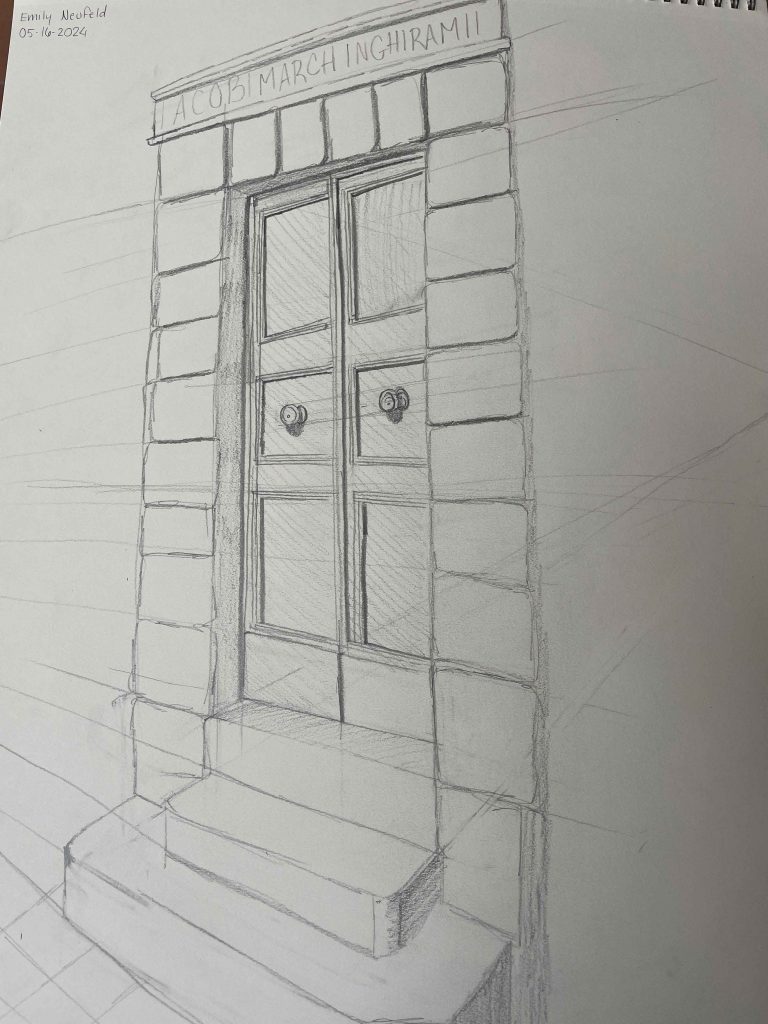
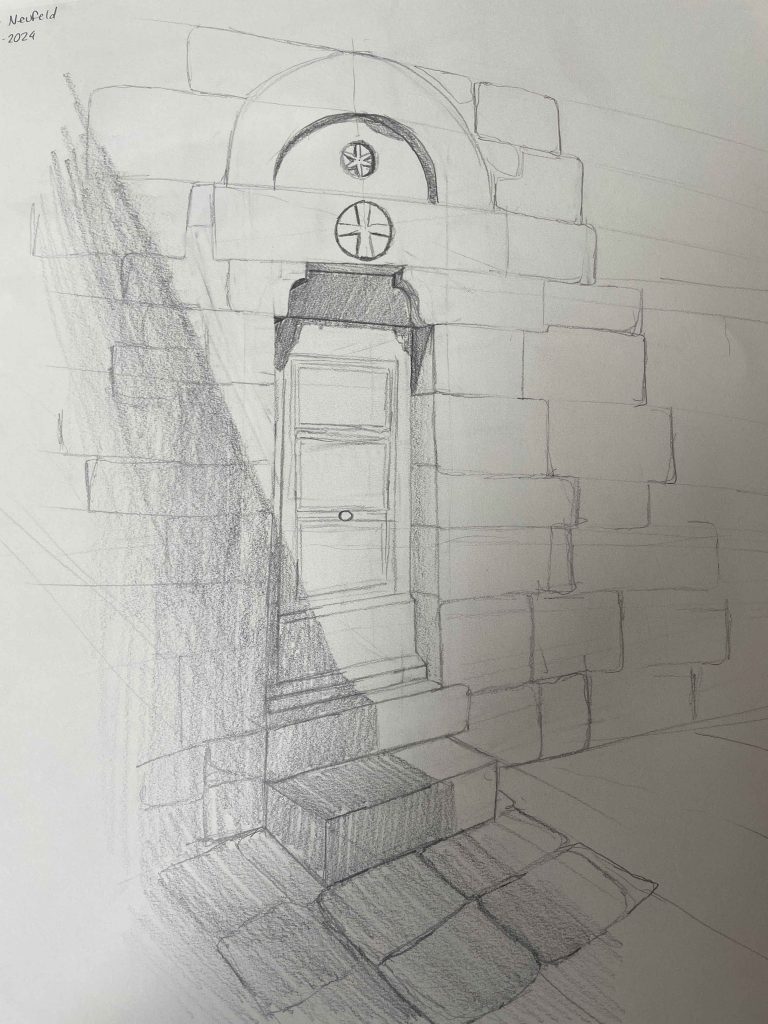
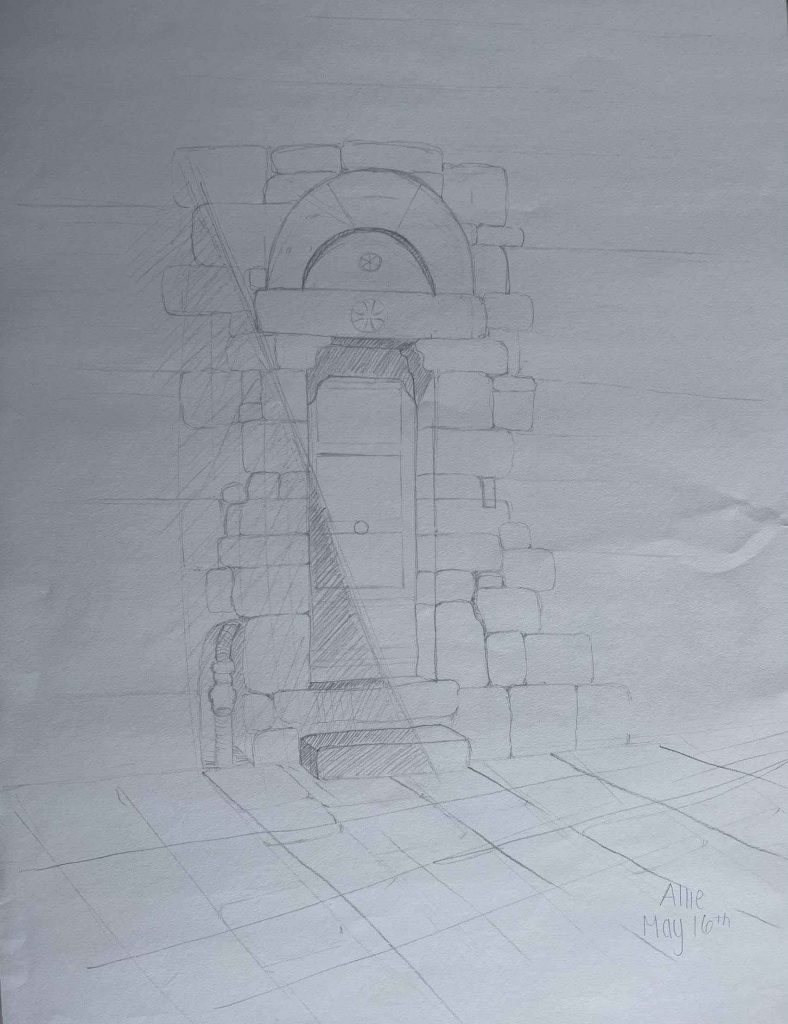
The assignment after this class was to choose a column capital from anywhere in the city. However, the task was to choose one of higher difficulty than others. This task would take the previously used skills to sketch a detailed capital. Focusing on perspective to be able to create the view was very important as a column’s capital is at the tallest point. If the wrong perspective was used it would distort the object, creating the wrong viewpoint.
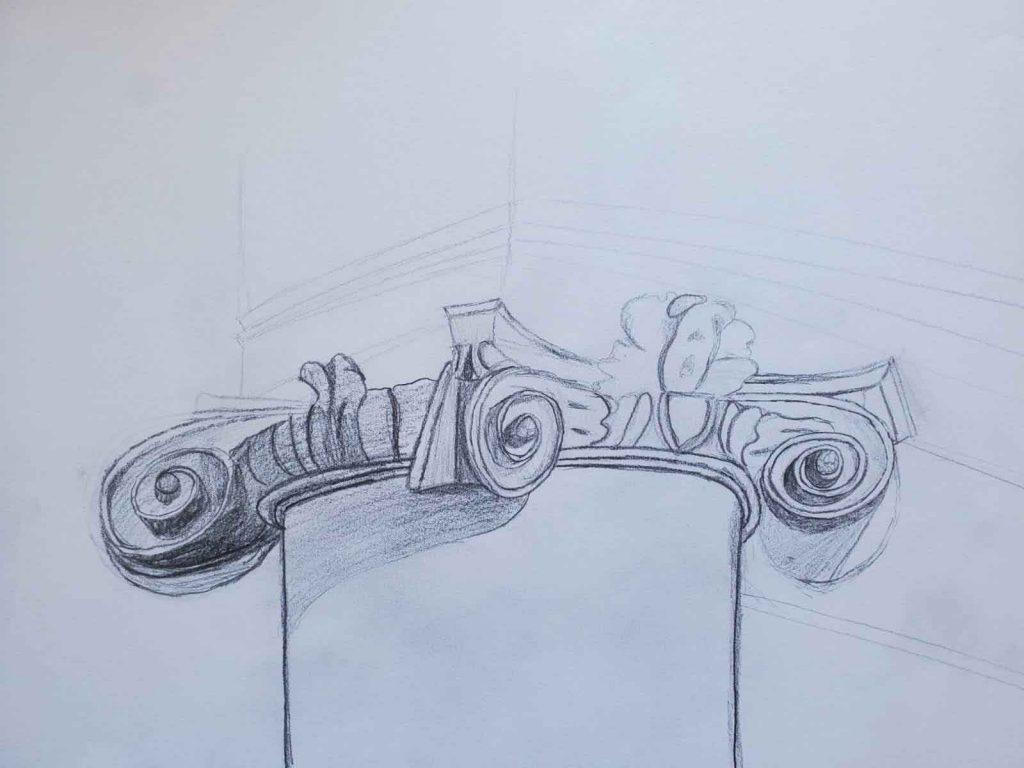
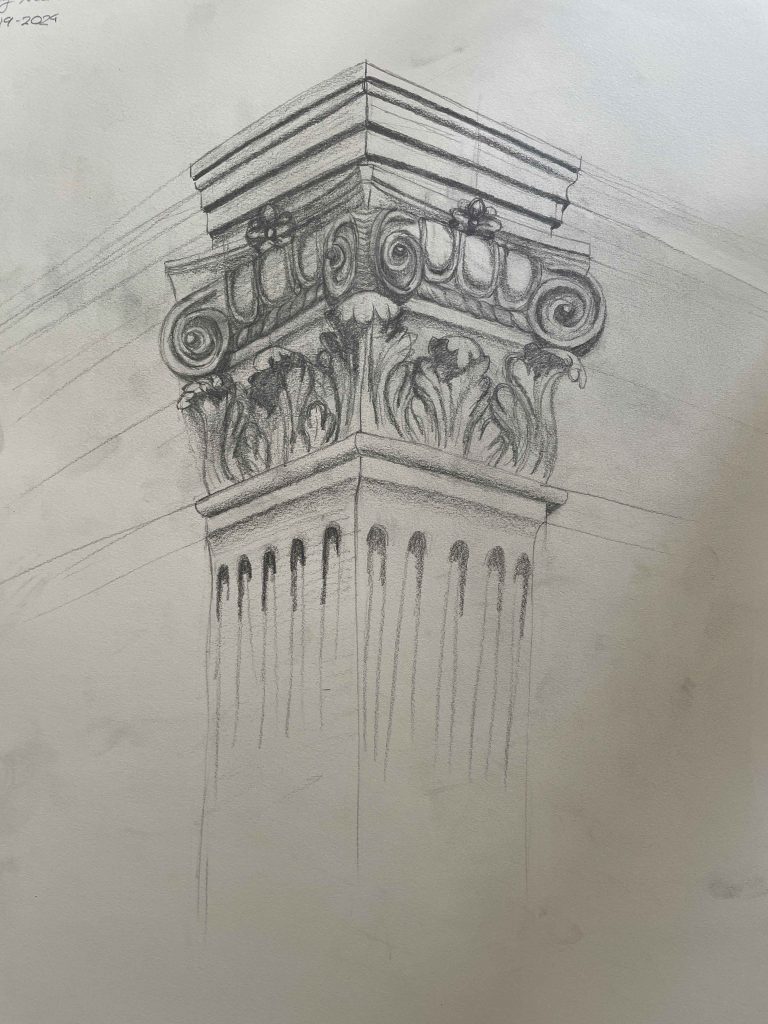
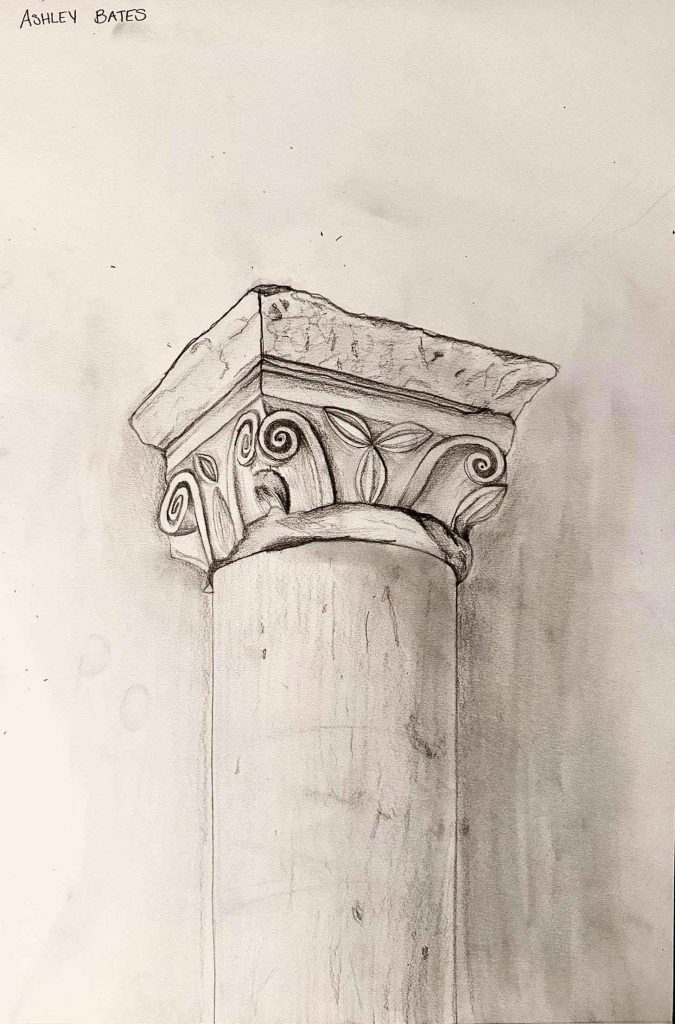
The third class was focused on landscape sketching. The students were given three different views of landscape in Volterra and told to sketch each view. The first view was of a church with an arch to the side. They were told to focus on the three points of a sketch; background, middle ground, and foreground. The second view was of the same church from the bottom of the nearby hill and to focus on creating a sense of distance by sketching the hill. The third sketch was of the cityscape near the church. The focus was to create a sense of detail without having to draw every detail in the cityscape.
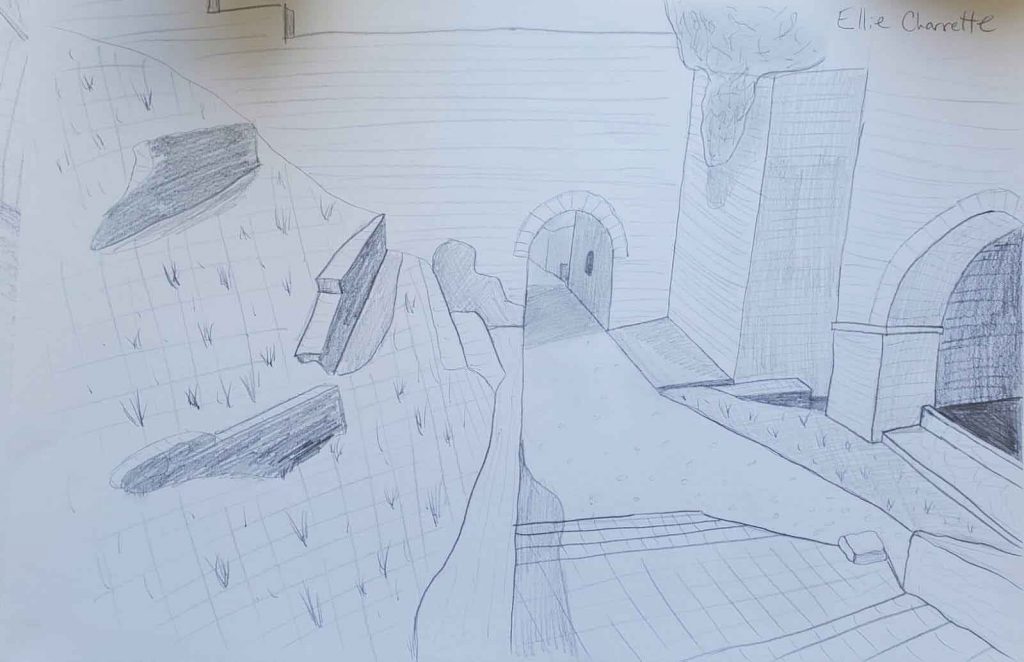
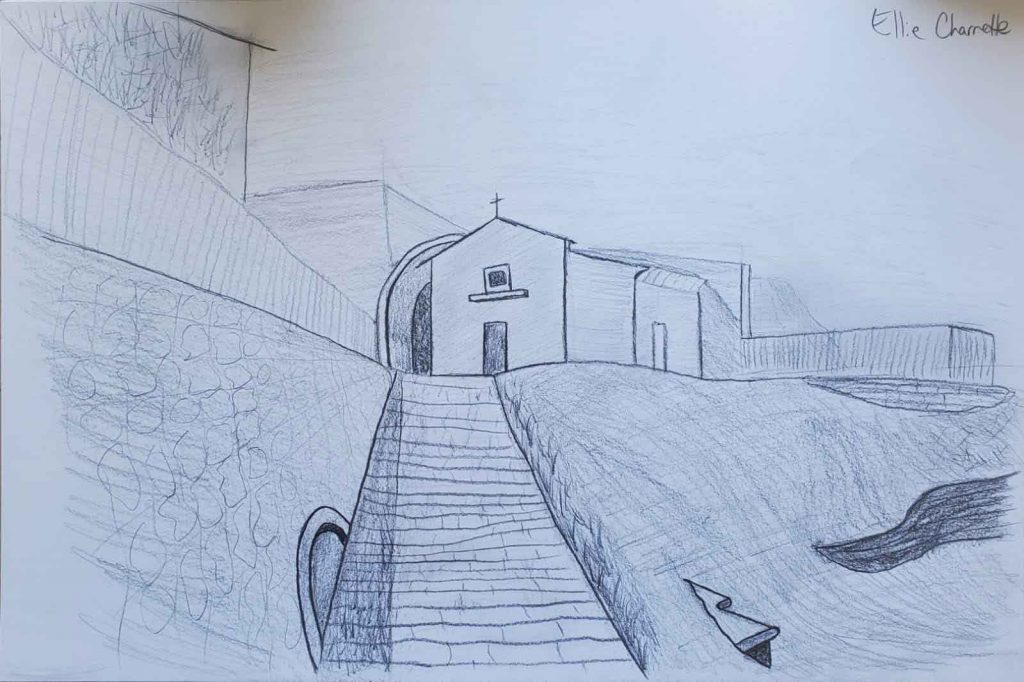
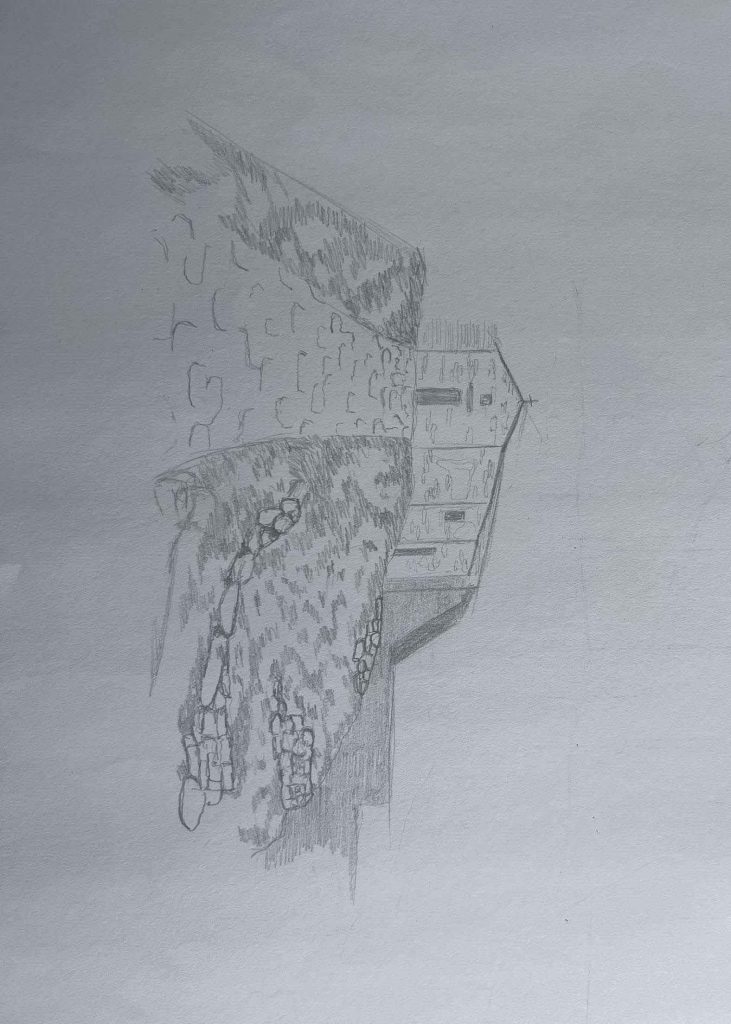
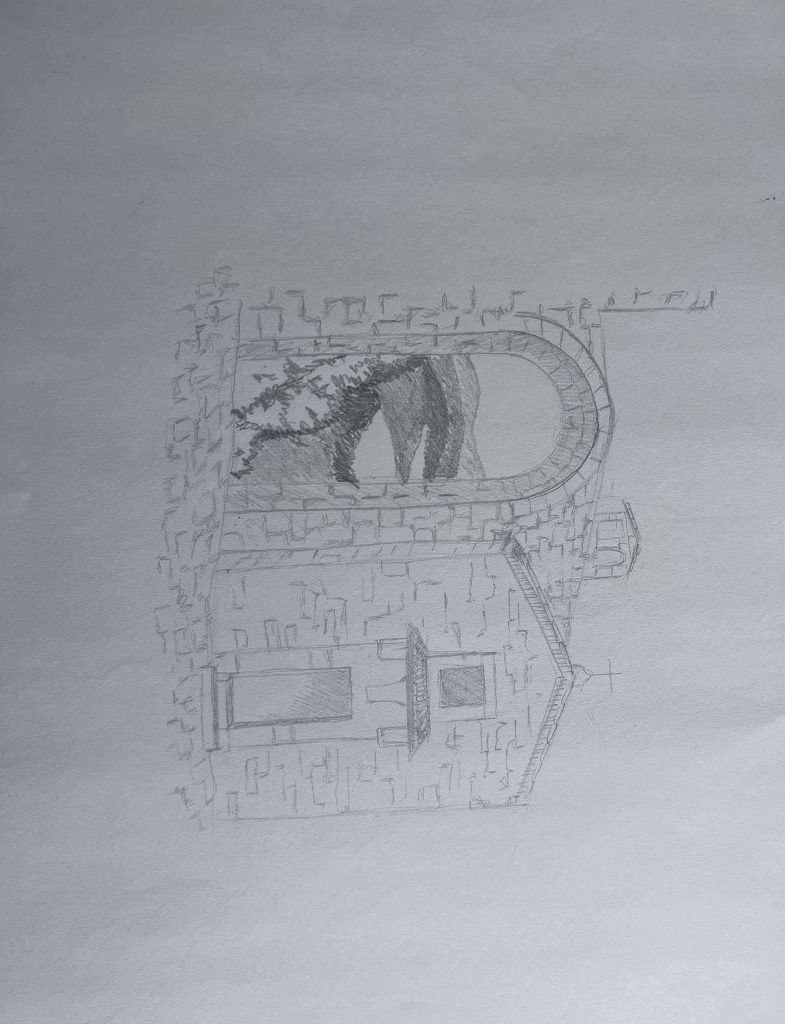
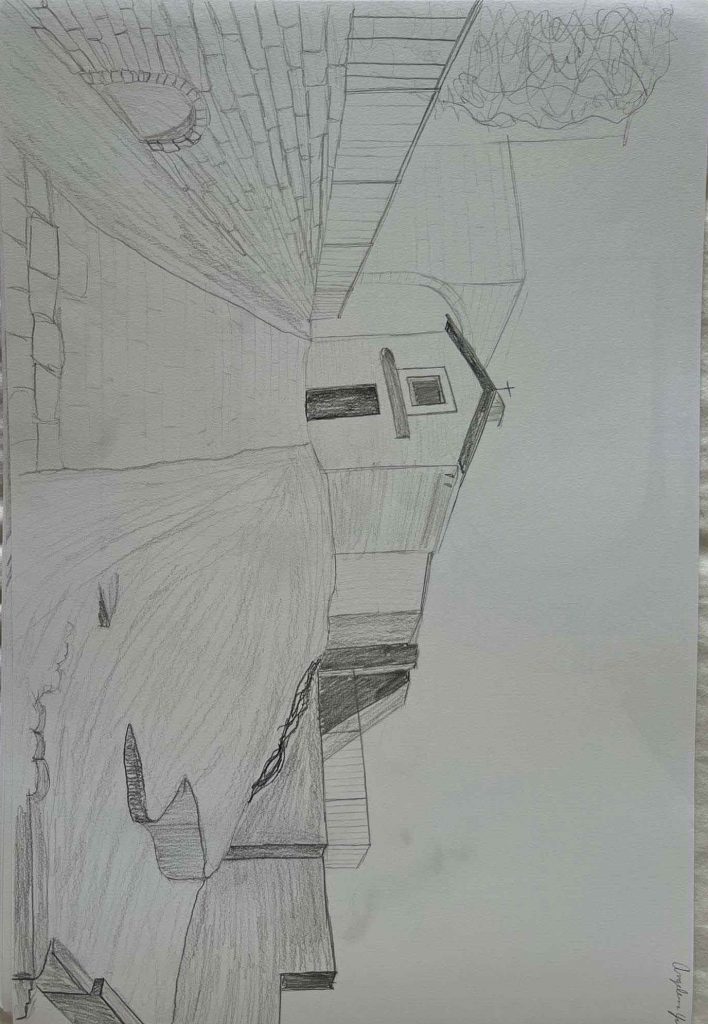
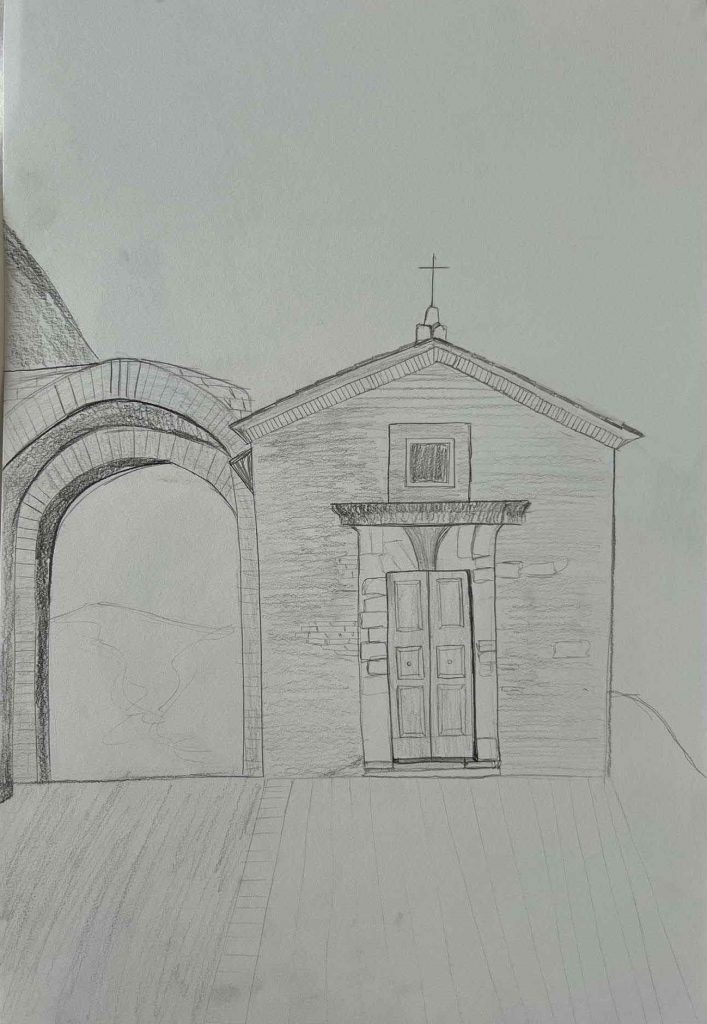
The next class was indoors because it was raining. Inside of the Volterra museum, the students sat around the atrium and sketched one of the arches around it. The goal of this class was to complete quick sketches that focused on the essence of the scene without needing details. After drawing the arch, students had to draw a door inside the atrium using the same quick sketch techniques. This drawing also focused on the light and shadows, using them to create the perspective of the drawing. Afterwards, students were given ten minutes to sketch the same arch and door as fast as they could while maintaining the level of detail from before.
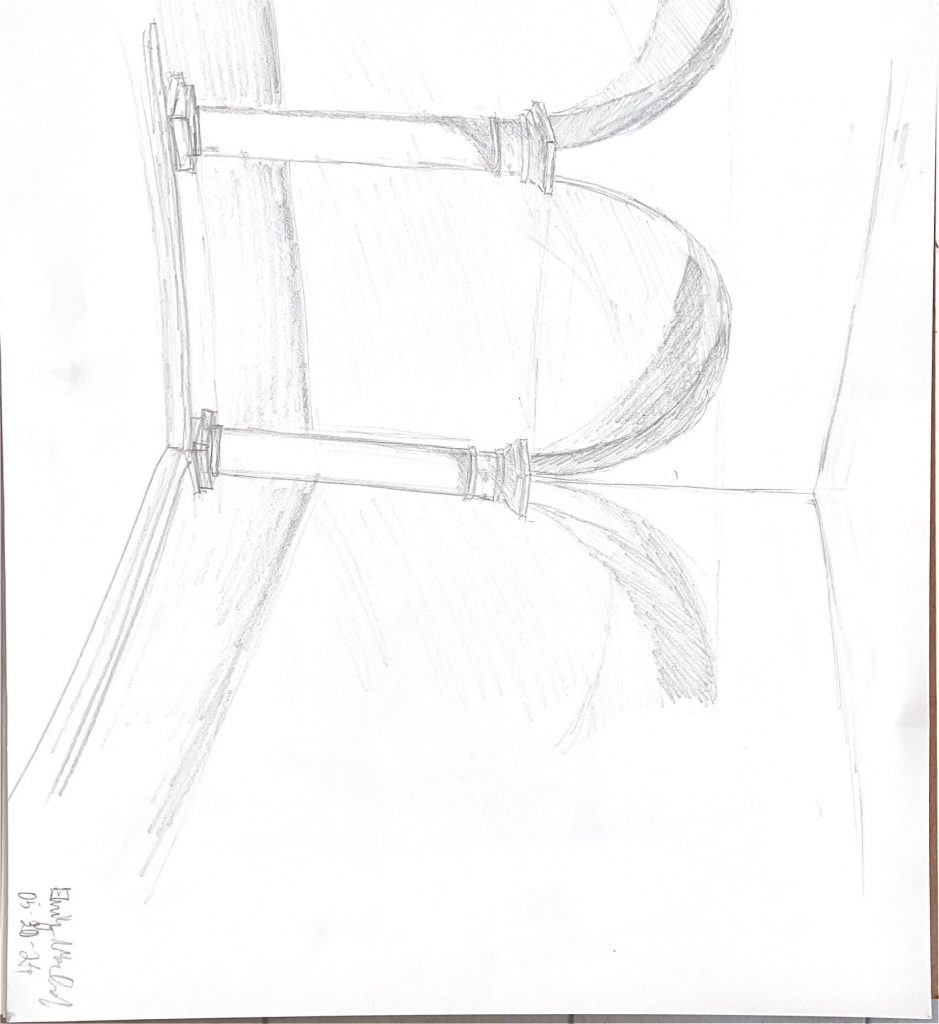
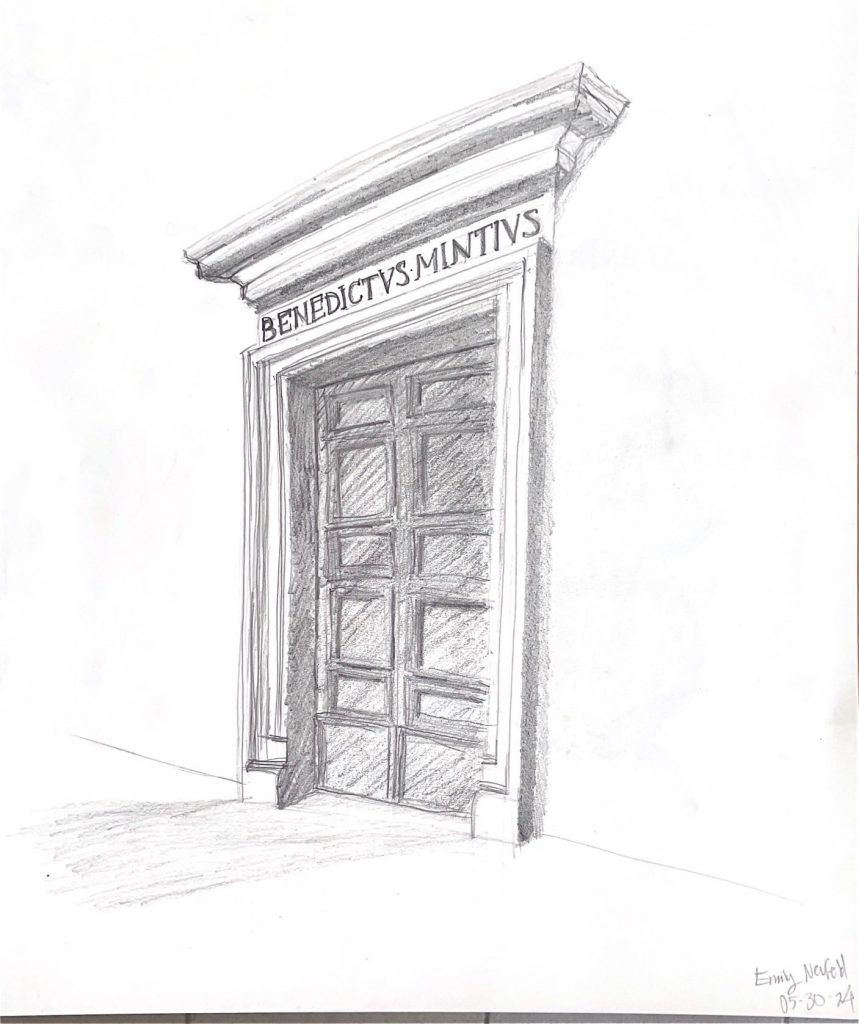
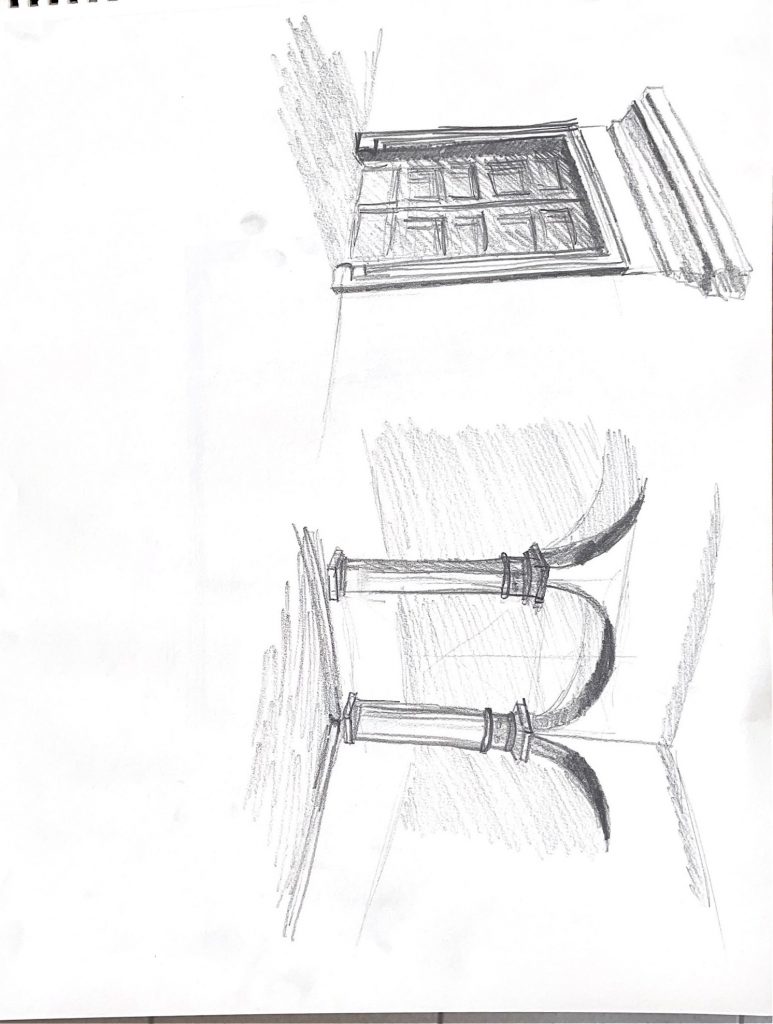
The sketching assignment for this class was to choose three doors around Volterra and sketch them. One door could be a very quick sketch, the second a regular sketch with some detail but not too much, and the third a detailed sketch. This was to show the students that they understood the techniques taught to them so far including the quick sketching, perspective, light and shadow and adding detail without needing to draw every detail in the scene.
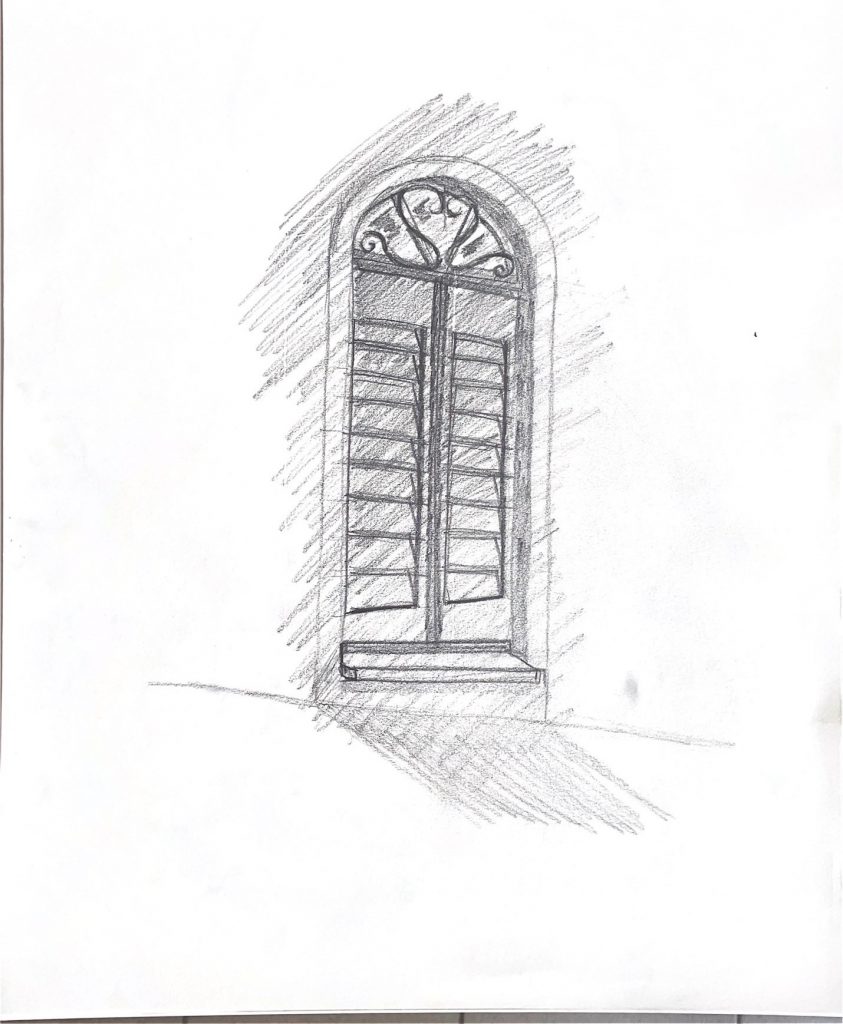
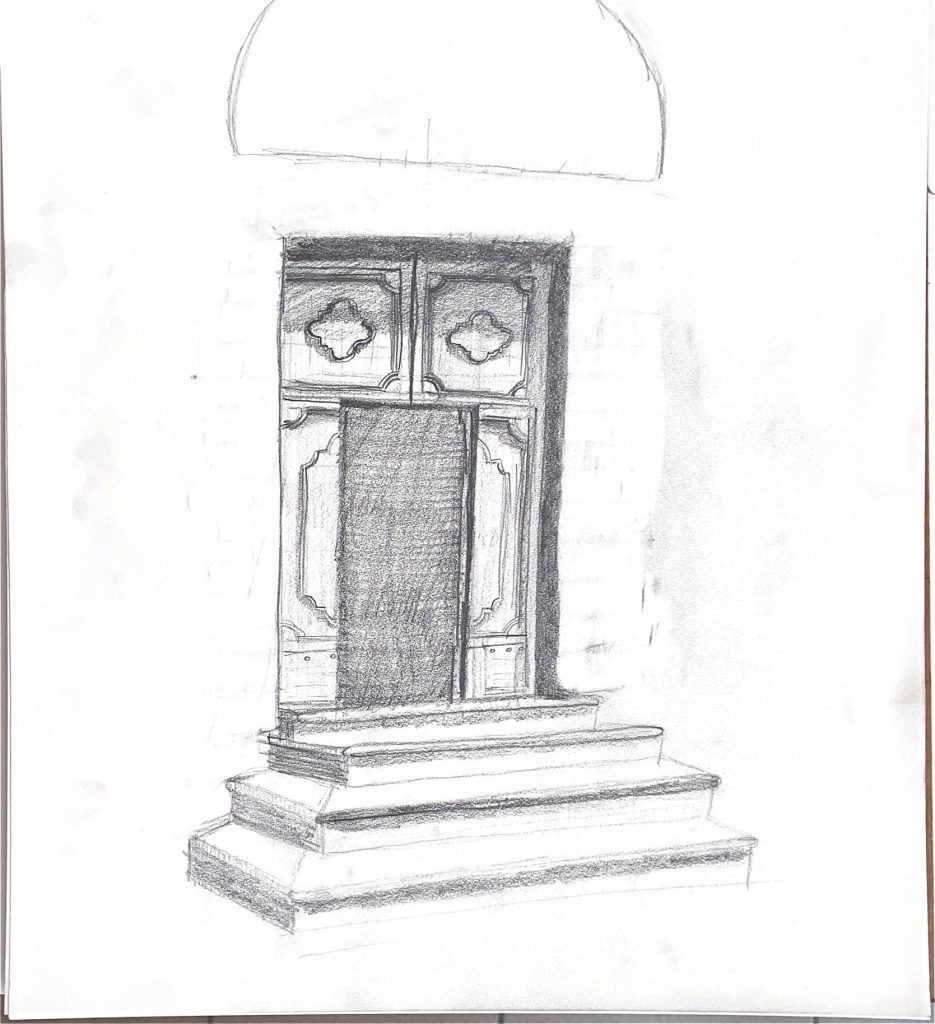
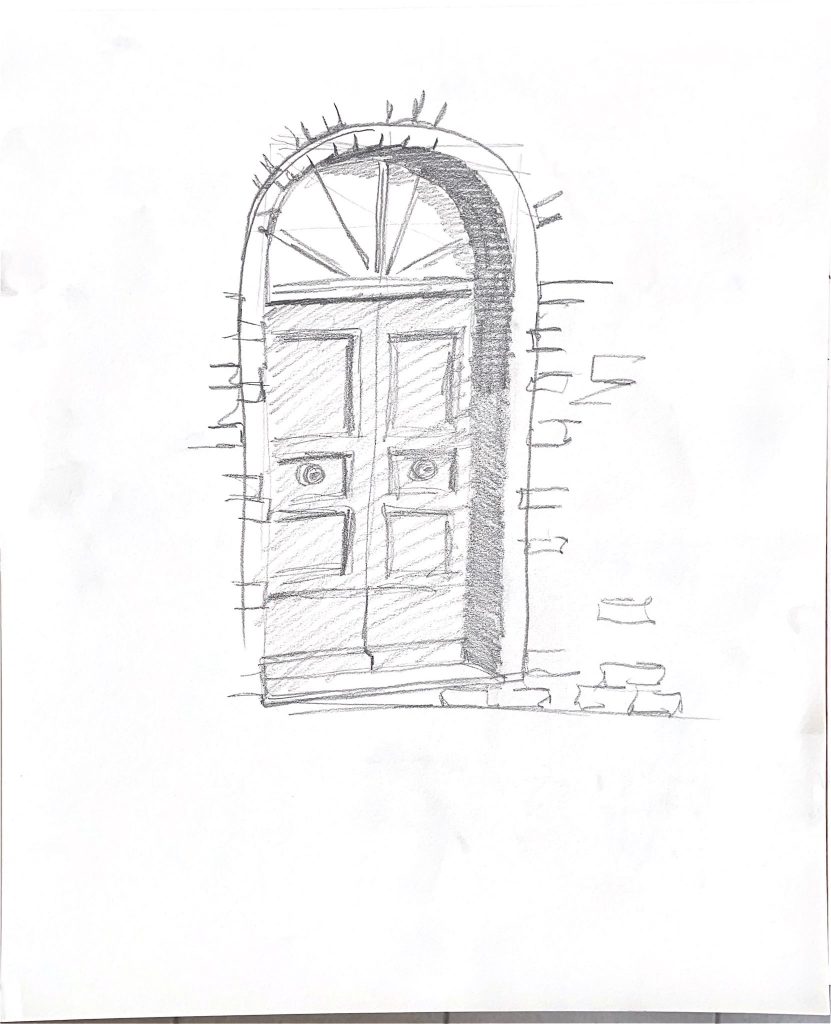
The last class of urban sketching was to sketch three scenes in Volterra. The trick of this class was that the sketches had to be done all on one page, which meant students had to plan their scale for each drawing so that they would fit. Each scene was different and focused on different perspectives. When they were done, the drawings came together to create on giant scene.
